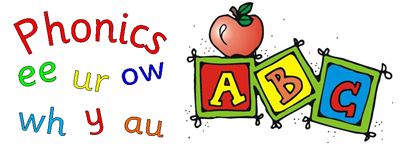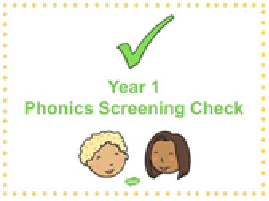
What is Phonics?
Phonics is a way of teaching children to read quickly and skilfully. They are taught how to:
– recognise the sounds that each individual letter makes;
– identify the sounds that different combinations of letters make such as /sh/ or /ee/; and
– blend these sounds together from left to right to read a word.
Children can then use this knowledge to ‘decode’ new words that they hear or see. This is the first important step in learning to read.
A high level phonics programme also provides guidance on teaching words that cannot be phonetically decoded; these are known as tricky words or common exception words.
There are 44 phonemes, represented by 26 letters in a range of different combinations.
What does Phonics look like at AHPS? (Intent)
At Avanti House Primary School, we follow ‘Twinkl Phonics’ which is a DfE validated full systematic, synthetic phonics programme that contains everything we need to deliver phonics teaching to children from the very beginning of learning to read and write to full fluency. Twinkl Phonics is a scheme based on Letters and Sounds. It follows the same sounds order throughout Nursery and Reception and through the early weeks of Year 1. Teaching of Level 5 and 6 GPCs and suffixes have been spread out in Twinkl Phonics to give more even coverage throughout Year 1 and 2.

How do we do this? (Implementation)
We teach phonics through a well-structured program (Twinkl DFE phonics) to ensure every child learns effectively. Our goal is to make phonics fun and accessible to all children.
What we aim to do:
- Teaching discrete phonics daily (for Reception) and continuing into year 1 and 2 where needed.
- Help children practice blending (sounding out words) for reading.
- Use Rhino Reader and Bug Club books to support reading practice, helping with blending, fluency, and understanding what they read.
- Teach children to segment (break down words) for writing.
- Support children in remembering tricky words and common exception words that don’t follow regular phonics rules.
- Make sure phonics lessons are tailored to each child’s needs, using fun and engaging activities that involve hearing, seeing, and doing.
- For children who benefit from extra visual or hands-on support, we use signs from the Twinkl Phonics Scheme to help them learn through sight, sound, and movement.
- Teach letter formation through the phonics program, making adjustments for children who need more hands-on learning.
- Encourage children to use phonics skills in other subjects and in everyday life.
- Focus on building foundational listening and speaking skills in Level 1 phonics. This helps children develop their vocabulary, setting them up for success in reading and writing.
What difference does it make? (Impact)
Research shows that when phonics is taught in a structured way – starting with the easiest sounds and progressing through to the most complex – it is the most effective way of teaching young children to read. It is particularly helpful for children aged 5 to 7.
Almost all children who receive good teaching of phonics will learn the skills they need to tackle new words. They can then go on to read any kind of text fluently and confidently, and to read for enjoyment.
Children who have been taught phonics also tend to read more accurately than those taught using other methods, such as ‘look and say’. This includes children who find learning to read difficult, for example those who have dyslexia.
How to support your child at home
There are many way to support your child at home. Please see below a glossary to help further help your understanding of Phonics and of the key vocabulary.
Key Vocabulary / Glossary
Phonemes: A phoneme is the smallest unit of sound
Graphemes: The grapheme is the letter used to represent the sound
Digraph: two letters used to make one sound (e.g. ch/ sh/ th)
Trigraph: three letters used to make one sound (e.g. igh/ ure/ air)
Split Digraph: A digraph in which the two letters are not adjacent (e.g. make/ bone/ like)
Vowel Digraph: A digraph that uses two vowels to make one sound (e.g. oo/ ai/ ee)
Consonant Diagraph: A digraph that contains two consonants (e.g. ck/ sh/ ch)
CVC: Consonant Vowel Consonant (c-a-t/ sh-ee-p)
Blending: Combining sounds together to read the word
Segmenting: Breaking up the sounds in a word to help spell the word
Homographs: Words that have the same spelling but differ in meaning and pronunciation, for example, a row of chairs or a row like an argument
Homophones: Words with common pronunciations but different spellings, for example, to / two / too or there / their
Syllable: One or more letters representing a unit of spoken language consisting of a single uninterrupted sound
Polysyllabic word: A word containing more than one syllable
Adjacent Consonant: Two consonants next to each other in a word, for example, trip or bend. These used to be known as ‘blends’ but must not be now. They need to be taught as separate sounds.
Please click on the links below to download documents which contain essential information and resources that will help you support your child in the development of their phonics, reading and writing:
Introduction to phonics powerpoint for parents and carers.pdf
Level 1 Resources
Level 1 Stop and Listen Activity Card.pdf
Level 1 Stop and Listen Checklist.pdf
Level 1 Crash Visual Prompt.pdf
Level 2 Resources
Level-2-sound-mat.pdf
Level 2 Letter Formation Practice sheets.pdf
Level 3 Resources
Level-3-letter-formation-practice-worksheets.pdf
Level-3-double-sided-decodable-word-cards.docx
Level 4 Resources (no new sounds-focus is on consolidating previously taught sounds and tricky words and reading and writing polysyllabic words)
Level 4 Phonics Word Search Adjacent Consonants.pdf
Level 4 Phonics Word Search CCVC Words.pdf
Level 4 Phonics Word Search CVCC Words.pdf
Level 5 Resources
Level 5 Tricky word flashcards.pdf
Level 5 Read and Race Common Exception Words (tricky words) 1.pdf
Level 5 Read and Race Common Exception Words 12.pdf
Level 5 Read and Race Common Exception Words 3.pdf
Level 6 Resources
Level 6 common-exception-words (tricky words)-flashcards.pdf
.
.
.
.
Useful Videos to Support Phonics Learning
Level 2 Twinkl Phonics Sounds and actions.
Level 3 Twinkl Phonics Sounds and actions.
Level 5 Twinkl Phonics Sounds and actions.
Demonstrates use of sound buttons, which is what we use in school, to support the children in their learning
How to read words by blending individual sounds together.
Demonstrates use of sound buttons, which is what we use in school, to support the children in their learning
What is the Year 1 Phonics Screening Check?
The phonics screening check is taken individually by all children in Year 1 in England. It is designed to give teachers and parents’ information on how your child is progressing in phonics. It will help to identify whether your child needs additional support at this stage so that they do not fall behind in this vital early reading skill.
There are two sections in this 40-word check and it assesses phonics skills and knowledge learned through Reception and Year 1. Your child will read up to four words per page for their teacher and they will probably do the check in one sitting of about 5-10 minutes. It is a school-based check to make sure that your child receives any additional support promptly, should they need it. It is not a stressful situation as the teacher will be well-equipped to listen and understand your child’s level of skills.
 It checks that your child can:
It checks that your child can:
- sound out and blend graphemes in order to read simple words
- read phonically decodable one-syllable and two-syllable words, e.g. cat, sand, windmill
- read a selection of nonsense words which are referred to as pseudo words
These are words that are phonically decodable but are not actual words with an associated meaning e.g. brip, snorb. Pseudo words are included in the check specifically to assess whether your child can decode a word using phonics skills and not their memory.
The pseudo words will be shown to your child with a picture of a monster and they will be asked to tell their teacher what sort of monster it is by reading the word. This not only makes the check a bit more fun, but provides the children with a context for the nonsense word which is independent from any existing vocabulary they may have. Crucially, it does not provide any clues, so your child just has to be able to decode it. Children generally find nonsense amusing so they will probably enjoy reading these words.
The school will report your child’s results to you by the end of the summer term as well as to the local authority.
What should I do if my child is struggling to decode a word?
- Say each sound in the word from left to right.
- Blend the sounds by pointing to each letter, i.e. /b/ in bat, or letter group, i.e. /igh/ in sigh, as you say the sound, then run your finger under the whole word as you say it.
- Talk about the meaning if your child does not understand the word they have read.
- Work at your child’s pace.
- Always be positive and give lots of praise and encouragement.
* Teachers will be in touch nearer the time of the check, which is usually in June.
Phonics Check
No Government Phonics Checks in 2020 and 2021 due to COVID-19.

